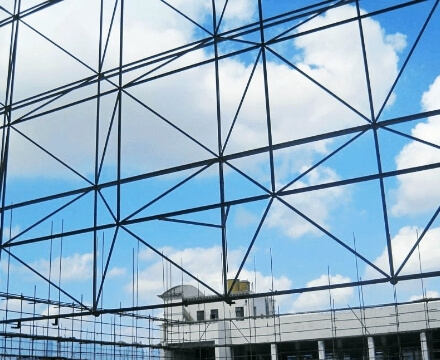Dapeng Town Industrial Park, Tongshan District, Xuzhou City, Jiangsu Province, China
Steel structure engineering is a structure mainly made of steel, which is one of the main types of building structures. In steel structures, brittle fractures sometimes occur. The main reasons that affect the brittle fracture of steel under certain conditions can be divided into internal factors and external factors of steel. The internal factors of steel refer to the chemical composition, structure and defects of steel; the external factors of steel refer to the structural defects of steel, and the stress concentration, low temperature effect, cold work hardening and strain aging hardening caused by welding processing. Therefore, to prevent brittle fracture in steel structure engineering, the following three points should be paid attention to during the design, manufacture and use of steel structures:

The steel should be selected correctly. As the strength of steel increases, its toughness and processability generally decrease. Therefore, it is not advisable to use a material that is stronger than actually required. At the same time, for steel structures that work at low temperatures and are subject to dynamic loads, the brittle transition temperature of the selected steel should be lower than the working temperature, for example, choose appropriate quality grades of Q235, Q355 and other steels, and use thinner section steel as much as possible and plates.
Avoid stress concentrations. In order to enable the steel structure to transmit stress uniformly and continuously, it is necessary to reduce the stress concentration of components and nodes. Under the normal service conditions of the steel structure, the rigidity and integrity of the structure should be reduced as much as possible to prevent the expansion of instability. For example, the connection between components and nodes should be connected by bolts as much as possible. If welded connections must be used, dense and crossed welds should be avoided, and structural forms with small welding residual stress should be adopted as much as possible.
Steel structure engineering should be manufactured in strict accordance with the design requirements. For example, it is not allowed to replace steel materials at will, not to change bolt connection to welding connection at will, and not to increase the thickness of weld seam at will. Drilling or punching should be used as much as possible before expanding. Drilling, and planing the sheared edge to avoid cold work hardening.
In order to ensure welding quality and reduce welding residual stress as much as possible, reasonable welding process and technical measures should be formulated, and welders who have passed the examination should perform welding. If necessary, heat treatment can be used to eliminate welding residual stress in main components. Arbitrary ignition and arcing on components shall not be allowed during welding. Defects caused during the fabrication and installation process, such as tack welds, arc strike plates, etc., should be cleaned and repaired, and the instruction inspection system must be strictly implemented during and after the fabrication and installation process.
In the process of use, the use of the steel structure should not be changed arbitrarily and overloaded; if the structure is originally designed to work at high indoor temperature, attention should be paid to keeping warm when shutting down for maintenance in winter; do not arbitrarily weld additional parts on the main steel structure for suspension Heavy objects; avoid impact or mechanical damage to the steel structure due to improper production and transportation; pay attention to inspection and maintenance at ordinary times.